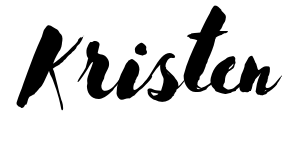Unless you’ve decided to move to a cave in the Himalayas, you probably share your life with people, maybe lots of them. That number grows exponentially when we include all of people that we meet every day who we’ll never actually get to know but may nevertheless impact.
We don’t live in a vacuum; most of us live in an intertwined society where we bump up against each other all of the time. And if you’re a parent, you may have wondered how we can teach our children to be connected to our communities and thoughtful contributors to our society.
This week’s guest has devoted her life to inspiring others to seeing themselves as part of a bigger whole.
Barbara A. Lewis is an award-winning author and educator who teaches kids how to think and solve real problems. Her curriculum in character development and social activism for kids and teens has formed the basis of several books, including:
· What Do You Stand For? For Kids
· What Do You Stand For? For Teens
· The Kid’s Guide to Social Action
· The Kid’s Guide to Service Projects,
· The Teen Guide to Global Action
(You can learn more at www.barbaraalewis.com/books.)
When she taught at Jackson Elementary School in Salt Lake City, Utah, her students initiated the cleanup of hazardous waste, improved sidewalks, planted thousands of trees, and fought crime. They instigated and pushed through several state laws and an amendment to a national law, garnering 10 national awards, including two President’s Environmental Youth Awards.
In addition to having Barbara on the episode, I had a co-host: Andy Hill, the creator of the Marriage, Kids and Money podcast. On his show, Andy explores personal finance topics to strengthen the family tree and help people live financially free. Find Andy at MarriageKidsandMoney.com.
Raising kids that become social activists might seem like a lofty goal, especially when many of us adults haven’t figured out how to fit volunteering and social activism into our own lives.
But what I love about this conversation with Barbara and Andy is that we can start to see that the entire foundation of where we as individuals connect with our community starts with teeny tiny shifts in our thinking and teeny tiny action steps. I for one felt relieved and inspired by the end of this conversation, and I think you will too.
KEY TAKEAWAYS
1. What I loved about Barbara’s approach to teaching citizenship and activism is that she’s the first one to admit that she doesn’t hand her students solutions. In her own words, her best skill is that she asks really great questions and she rarely knows the answers. To hand a kid a problem and then tell them how to solve it is, as Barbara says, the kiss of death. They just won’t have any sense of ownership to take it anywhere.
2. Activism can start with something as simple as going for a walk around your neighborhood and looking for problems your kids could help to solve. It’s reminding our kids that they are good problem solvers and then resisting the urge to solve those problems for them.
3. In addition to letting them be their own problem solvers, Barbara encourages parents and teachers to let kids be their own advocates. In her experience, kids are much more compelling and effective at enrolling adults when they’re not puppets but authentic spokespeople of the cause they are advocating for. It’s so important that we teach our kids to speak up for themselves and to speak effectively to adults.
4. We as adults need to learn to censor our “yeah, buts.” When a child comes to us with an idea, we might have all sorts of reasons why it won’t work. But kids are natural possibilitairans; they can cut through all of the red tape with their imaginations when we step aside and let them work through a problem creatively without us stepping in to poo poo it right from the beginning.
5. One of the best ways to teach our kids about character (fairness, cooperation, caring, responsibility, etc.) is to draw on the stories around us. These could be real-life examples, books or movies. Stories help kids to make the connection.
6. When it comes to social activism, the size of the project makes no difference. The entire purpose of a service project is to make the connection between problems and solutions. It’s the change we experience on this inside that matters most.
SHARE & SUBSCRIBE
A big thanks to Barbara and Andy for being on the show this week.
You can learn more about Barbara, her books and her workshops, at http://www.barbaraalewis.com.
To track down my cohort, Andy, head over to MarriageKidsandMoney.com.
Until next time,
